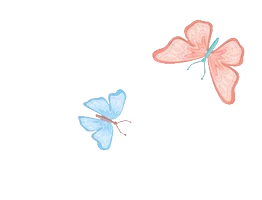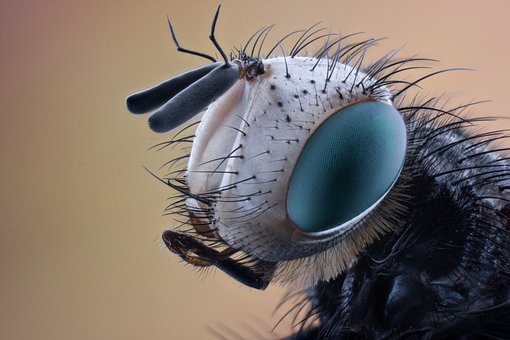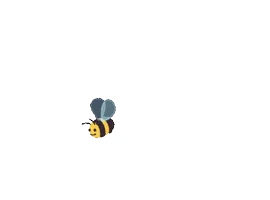After the rise in awareness regarding the importance of being environmentally friendly, pest control industries have shown considerable interest in new technologies that do not use synthetic pesticides due to the negative impacts of these chemicals on the environment. They have introduced a “clean” form of pest control through new technologies that make use of insects’ instinctive responses to light. In this article, we are to provide you with details about insects’ instinctive responses to light.
Insects’ instinctive responses to light
Researchers have shown that most insects have two types of photoreceptive organs including compound eyes and ocelli. A large number of light-sensitive units termed ommatidia exist in compound eyes. An ommatidium contains an elongated bundle of photoreceptor cells, each having specific spectral sensitivities. These structures help insects cover a large visual field and perceive the motion of objects. The visible light wavelengths that expand into the ultraviolet (UV) region invisible to humans, can be determined by the spectral sensitivities of photoreceptors. A compound eye typically contains three types of photoreceptor cells with spectral sensitivity peaking in the UV, blue, and green wavelength regions. Although some sawflies have red receptors, many insects can perceive UV light as a unique color. This innate phototactic behavior has provided the basis of new technologies applied by pest control industries in designing electric insect killers and producing pesticides.
Light Affects Insects’ Behavior
One of the most typical responses of insects to light is named phototaxis. Insects exhibit different phototaxis behaviors:
Attraction
In this positive phototaxis behavior, insects move toward the light source. The effective wavelengths and intensities vary among species. Pest traps make use of this response.
Repulsion
Specific wavelengths and intensities repel insects which can prevent them from entering a cultivation area. This is called a negative phototaxis behavior.
Light Adaptation
Nocturnal insect species exhibit typical daytime behaviors like cessation of movement or settling down when they are exposed to light for several minutes at night. In this scenario the insects are light-adapted and using this characteristic could inhibit behavior such as flight and mating.
Circadian Rhythms
This response which is also called a “phase shift” in chronobiology, can be described as shifting the timing of circadian rhythms like flight, feeding, courtship, mating, etc. These diurnal/nocturnal behaviors’ timing can be changed through artificial lighting for a certain duration at night.

Photoperiodicity
This is a physiological response used to prevent the initiation of diapause. This technique can be used to keep insects from entering dormancy causing them to become unable to overwinter due to being exposed to light repeatedly for several days.
UV Toxicity
The retinas of compound eyes are damaged and structurally degenerated through the use of UV and blue light radiation. So, normal development or survival are disrupted.
Visibility Control with UV-Blocking Film
Greenhouses are covered with UV-blocking film because insects can’t fly toward something that they are unable to see. Plants inside remain invisible to insects, preventing them from entering a cultivation area.
Read More: Natural pest control methods
Dorsal Light Reaction
Insects’ orientation of flight stabilizes horizontally when the perceived light shines on their dorsal side like sunlight. Many flying insects such as dragonflies and desert locusts have this characteristic. It can be disturbed by covering the ground with a highly reflective mulching sheet that reflects light from below. This method is also beneficial in preventing insects from entering a cultivation area.
There is a large variety of factors that affect responses to light like:
- Light intensity
- Light wavelength
- Combination of wavelengths
- Time of exposure
- The direction of a light source
- The contrast of light source intensity to ambient light
- Color of the light source
Moreover, a light source such as a light bulb or light-emitting diode (LED) and a material like a light-reflecting plate can change insects’ behavior qualitatively and quantitatively.
Here are some examples of technologies that apply innate phototactic behavior in pest control:

Light Sources at Night
Many nocturnal insect species like moths, beetle, and stinkbugs are attracted to artificial light sources that emit large amounts of UV radiation. Blue fluorescent lights, black lights, and mercury lamps hold the strongest attraction for insects. Various electric insect killers in greenhouses and stores that are open at night use this method.
Color Plates
Artificial light sources are less effective in attracting insects during the day due to the intensity of sunlight. In this situation, colored devices are used as physical control. This could include yellow pan traps or yellow sticky traps that are supposed to attract crop pests like planthoppers, leafhoppers, aphids, whiteflies, thrips, and leaf miner flies.
Suppressible Yellow Light for Nocturnal Insects
Running yellow fluorescent lamps in orchards at night provokes a light adaption response in insects. Fruit-piercing moths such as Eudocima Tyrannus Guenée, Oraesia emarginata, and Fabricius are light-adapted. Nocturnal behaviors like flying, sucking the juice of a fruit, and mating are suppressed. This technique is also used to prevent damage to chrysanthemums and carnations by the cotton bollworm Helicoverpa armigera Hübner, damage to green perilla by the common cutworm Spodoptera litura, and damage to cabbage by the webworm, Hellula undalis Fabricius. Green fluorescent lamps have also been developed to suppress the various activities of several moth species, but they have little effect on the growth of plants compared to the yellow ones. Nowadays, LEDs are applied to control the nocturnal moths’ behaviors. They can produce highly monochromatic lights across the spectrum from UV to red. This optical characteristic and low cost have attracted considerable interest in the pest control industry.

UV-Absorbing Films
This method is a visibility control in pest infestation. A greenhouse covered with UV-absorbing film is hypothesized to appear dark for insects. So, insects cannot see the greenhouse. This technique prevents different insect species such as aphids, whiteflies, and thrips from entering greenhouses. This method also has some disadvantages. For example, some insects like honeybees that play a key role in pollination are prevented from entering facilities as well. So, this means of control should be treated with caution.
Reflective Mulching Films
This technique utilizes the insects’ response to light called dorsal light reaction. Flying insects become unable to continue their normal flight while the light reflects from the ground. It is beneficial in controlling the invasion of thrips, whiteflies, and alate aphids. Covering the ground with a highly reflective mulching sheet inhibits the normal orientation of flight.
Last Word
To sum up, light traps are currently used to monitor and manage pest population and play a significant role in physical pest control. In this article, we have tried to provide you with comprehensive information regarding one of the most efficient pest control methods.

